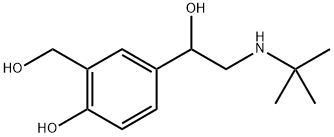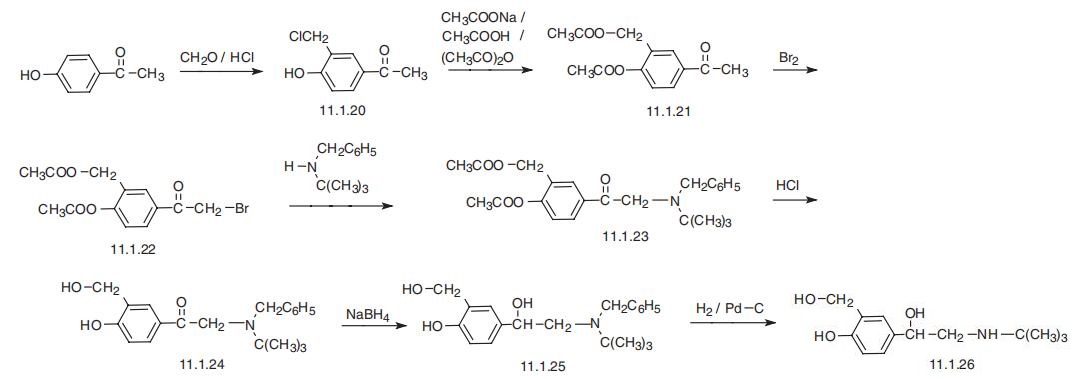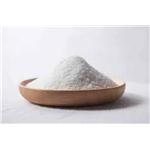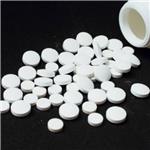
Salbutamol
- Product NameSalbutamol
- CAS18559-94-9
- CBNumberCB3129524
- MFC13H21NO3
- MW239.32
- EINECS242-424-0
- MDL NumberMFCD00869868
- MOL File18559-94-9.mol
Chemical Properties
| Melting point | 157-160℃ |
| Boiling point | 381.97°C (rough estimate) |
| Density | 1.0700 (rough estimate) |
| refractive index | 1.4800 (estimate) |
| storage temp. | 2-8°C |
| solubility | Sparingly soluble in water, soluble in ethanol (96 per cent). |
| pka | pKa 9.07(H2O t = 25.0±0.05 I = 0.10) (Uncertain);10.37(H2O t = 25.0±0.05 I = 0.10) (Uncertain) |
| form | Solid |
| color | White |
| Water Solubility | 17.95g/L(25 ºC) |
| Merck | 13,215 |
| BRN | 6405698 |
| BCS Class | 3 |
| Stability | Stable, but light sensitive. Incompatible with strong oxidizing agents. |
| InChIKey | NDAUXUAQIAJITI-UHFFFAOYSA-N |
| LogP | 0.64 |
| CAS DataBase Reference | 18559-94-9(CAS DataBase Reference) |
| FDA UNII | QF8SVZ843E |
Safety
| Symbol(GHS) |

|
| Signal word | Warning |
| Hazard statements | H302-H317-H319-H412 |
| Precautionary statements | P261-P273-P280-P301+P312-P302+P352-P305+P351+P338 |
| Hazard Codes | Xn,T,F |
| Risk Statements | 22-39/23/24/25-23/24/25-11 |
| Safety Statements | 36-45-36/37-16-7 |
| RIDADR | 3249 |
| WGK Germany | 3 |
| RTECS | ZE4400000 |
| HazardClass | 6.1(b) |
| PackingGroup | III |
| HS Code | 2922504500 |
| Hazardous Substances Data | 18559-94-9(Hazardous Substances Data) |



